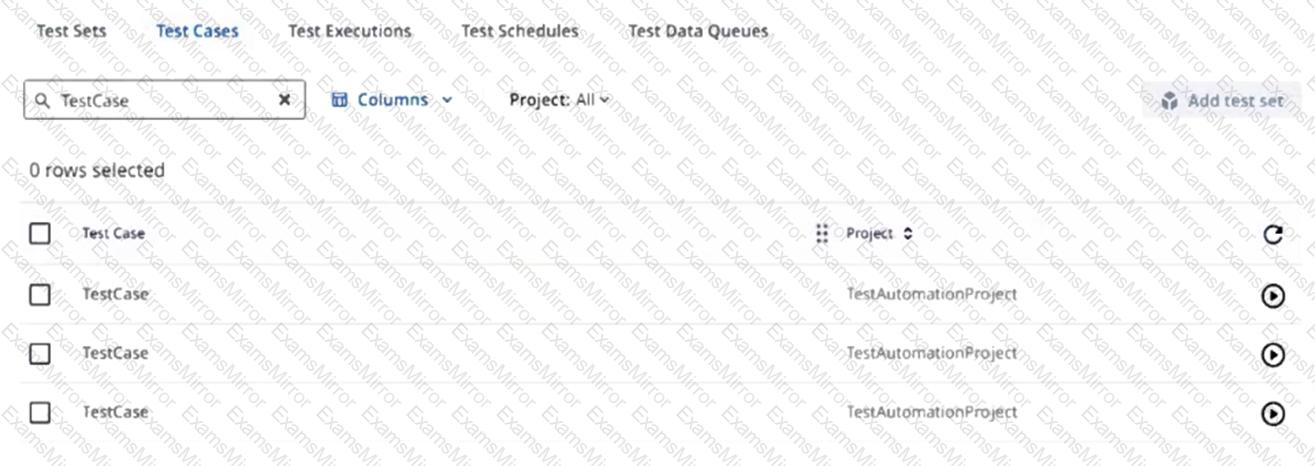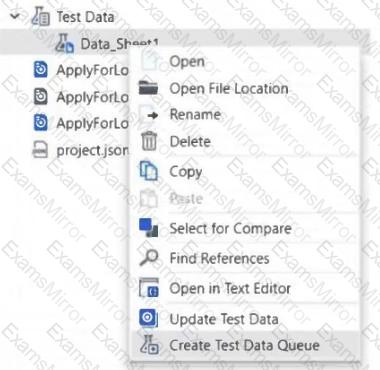Cyber Monday Special Limited Time 70% Discount Offer - Ends in 0d 00h 00m 00s - Coupon code = getmirror
Pass the UiPath Certified Professional - General Track UiPath-TAEPv1 Questions and answers with ExamsMirror
Exam UiPath-TAEPv1 Premium Access
View all detail and faqs for the UiPath-TAEPv1 exam
610 Students Passed
90% Average Score
91% Same Questions
Which type of local templates can be used when creating a new test case?
What type of data sources can be used for a data-driven test that will be developed using UiPath Test Suite on Premises version?
Why are test cases duplicated in orchestrator for the scenario below?

What are the prerequisites before executing automated tests through the 'Execute Automated' option in UiPath Test Manager?
What is the appropriate scenario to use the "Synchronize mock" action?
Which is an activity in UiPath Studio?
Which are the available actions that enable a user to examine the test execution results in UiPath Orchestrator?
Which activity enables retrieving random data from a defined set of test data?
What needs to be provided in order to create a Test Data Queue from static Test Data in UiPath Studio?

How does the licensing model work for Testing runtimes in UiPath?
TOP CODES
Top selling exam codes in the certification world, popular, in demand and updated to help you pass on the first try.

 View execution details – to see overall test run information
View execution details – to see overall test run information View assertions – to review the pass/fail conditions of test cases
View assertions – to review the pass/fail conditions of test cases View logs – to analyze runtime logs for debugging and validation
View logs – to analyze runtime logs for debugging and validation